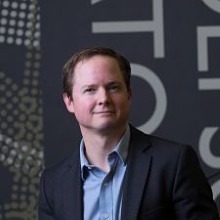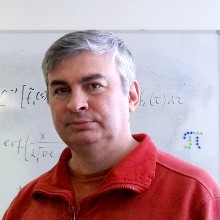Biomaterials
Biomaterials
Biomaterials
Biomaterials
The development and characterisation of biomaterials, soft materials and metamaterials for life sciences, including medical devices and their role in diagnostics and controlling biological function.
Research groups associated with bio/soft materials at Exeter
- Biomedical Engineering
- Biomedical Physics
- BioSpec Labs
- Raman Nano Theranostics (RANT)
Contact us: metamaterials@exeter.ac.uk
Equipment and facilities
CONTRAST - the UK’s first user access coherent Raman scattering facility
Case studies
Professors
Professor Euan Hendry

We explore the potential for developing new THz components and sensors to fill the so called “THz gap”, utilizing novel magnetic and plasmonic responses of many materials in this region, and are currently working on novel methods for imaging in this difficult spectral region. We also work in plasmonics, and explore the possibility of replacing coinage metals with new materials such as graphene and ITO. These materials have tuneable electromagnetic responses, as free electrons can controllably introduced by chemical, electrical or photo- doping, making the manipulating light on extreme sub-wavelength length scales possible, and we focus on enhancing nonlinear optical responses for optical switching etc.
Professor Geoff Nash

THz materials, imaging and spectroscopy; Nonlinear optics
We explore the potential for developing new THz components and sensors to fill the so called “THz gap”, utilizing novel magnetic and plasmonic responses of many materials in this region, and are currently working on novel methods for imaging in this difficult spectral region. We also work in plasmonics, and explore the possibility of replacing coinage metals with new materials such as graphene and ITO. These materials have tuneable electromagnetic responses, as free electrons can controllably introduced by chemical, electrical or photo-doping, making the manipulating light on extreme sub-wavelength length scales possible, and we focus on enhancing nonlinear optical responses for optical switching etc.
Professor Francesca Palombo

Biophotonics and Biomechanics
The mechanical properties of biological tissues are central to their function and impairment is implicated in ageing and disease. Changes in the macroscopic mechanical properties, and tissue structure and composition, are both well characterised but the causal relationships between them are largely unclear. A novel microscopy technique based on Brillouin light scattering from acoustic waves at GHz frequencies has emerged for the contactless 3-D probing of tissue mechanics at the microscopic and subcellular levels. In Exeter we advance the development and applications of Brillouin microscopy as a novel optical technique within biophotonics and the clinical environment.
Professor Frank Vollmer

Single-Molecule Biosensors
Sensor systems have emerged that exhibit extraordinary sensitivity for detecting physical, chemical, and biological entities at the micro/nanoscale. Particularly exciting is the detection and analysis of molecules on miniature devices that have many possible applications in health, environment, analysis, and security.
Living Systems Institute (LSI): Vollmer Laboratory of Nano and Quantum Biosensing
Associate Professors
Professor Dave Phillips

Structured light
I work on spatial structuring of infra-red and visible light for a variety of applications to imaging, optical trapping and optical communications. Dynamic light shaping is achieved using liquid crystal spatial light modulators and digital micro-mirror devices. We are also developing new methods to create compact light transforming optics using direct laser writing (microscale 3D printing).
Professor Feodor Ogrin

Bio-inspired magnetic systems
Many microorganisms in the natural world have developed properties which could be invaluable for our technologies. Even a ‘simple’ motion or moving liquid at microscale can help us to revolutionise a range of practices used in medicine and biotechnology. In this research we use magnetic materials to help us creating microscopic machines that would be able to mimic micro-organisms. As well as building and controlling them the main challenge of the research is to find the ways to recreate the mechanics of the biological systems in the highly viscous environment which they are exposed to. Our research is highly interdisciplinary, and as well as the magnetic phenomena includes such disciplines as hydrodynamics, microfluidics, mechanics and electromagnetism.
Dr Stefano Pagliara

Membrane transport in antibiotic resistance
Bacteria exchange molecules with their environment taking up molecules essential for subsistence while excluding poisonous molecules such as antibiotics. They do so by using proteins that form physical pathways for molecular transport across membranes, these pathways being at the basis of antibiotic resistance, one of the most challenging problems for our society. Using a metamaterials approach through microfluidics and imaging I study the fundamental diversity in the capability to take up molecules in bacteria, aiming to understand which physical pathways are used by individual bacteria to achieve this diversity. The new knowledge that I am developing will provide guidelines for the optimisation of antibiotic therapy in killing infecting bacteria.
Senior Lecturers/Lecturers
Dr Alex Corbett

Fluorescence Microscopy
We explore different techniques for non-invasively observing live biological samples to recover three-dimensional image data. These techniques include exploiting linear and non-linear optical effects, phase conjugation techniques or using active optical devices to generate structured light patterns to provide image data with high spatial and temporal resolution.
Key research challenges include expanding the three dimensional field of view of these imaging system to study larger samples, the development of new probes to improve contrast, imaging depth and chemical specificity, increasing sample throughput to generate reliable statistics of specimen behaviour and finally generating new image processing algorithms (including AI) to extract meaningful information from large data sets.
Dr Calum Williams

Calum's research aims to understand & control light-matter interactions in photonic nanostructures, and to build next-generation optical devices that make use of this understanding.
He is specifically interested in unconventional imaging and sensing systems (visible-to-mid-infrared wavebands) enabled through the development of new nanofabrication tools, tunable optical (active) materials, and multifunctional optical metasurfaces. Application areas include biomedical diagnostics, environmental monitoring and remote sensing. Research challenges lying at the interface between disciplines are particularly exciting.
Dr Peter Petrov

Mechanics and electrostatics of soft and biomembranes
My research interests are in the area of membrane biophysics, with emphasis on the relationships between membrane composition, mesoscopic lateral ordering, physical properties and biological function. Much work is carried out on the biophysics of the interactions between bacterial toxins and cell membranes, transmembrane transport as well as 2D mesoscopic structure and physical properties of artificial lipid mono- and bilayers using a variety of advanced optical microscopy and synchrotron techniques. Further research interests include statics and dynamics of wetting and low Reynolds number propulsion.
Dr Rupam Das

Rupam's research is multidisciplinary, at the interface of electronics, physics and biology. His primary focus is on leveraging electromagnetic and electronic tools in the field of implantable, wearable devices and medical imaging.
Metamaterials and metasurfaces are exciting new tools that can solve some of the many issues faced in biomedical engineering such as miniaturization of components and power consumption. Within this area, he is currently working on developing metamaterial-based wireless neuromodulation systems and implantable neural probe for the treatment of brain diseases.

